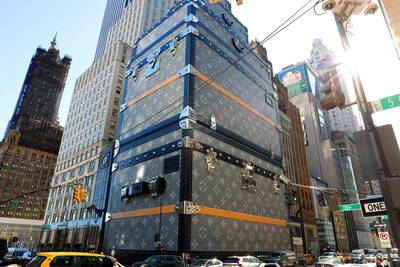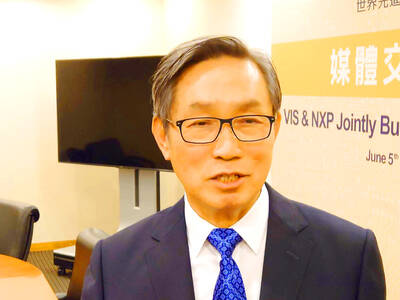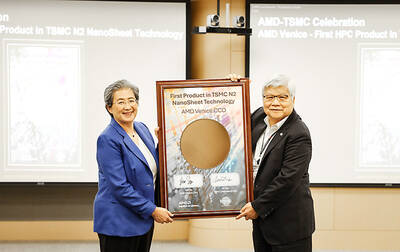Kaohsiung Harbor management vowed yesterday to boost productivity as a report showed that although Kaohsiung retained its title as the world's sixth-busiest container port last year, it is quickly losing its competitiveness.
"We will try to boost our efficiency, cut shipping lines' cost and increase the number of trans-shipment containers," Harbor Master Huang Kuo-ying (
"Our target for 2006 is 10 million TEUs [20-foot equivalent units], and half of them will be trans-shipment containers," he said.
Huang was responding to the Ministry of Transportation and Communication's report which warned that Kaohsiung Harbor was quickly losing its competitiveness because of Taiwan's five-decade ban on sea links with China and the expansion of foreign ports, especially Chinese ports.
Kaohsiung Harbor was the world's third-largest container port in 1999.
The ministry's report is based on the compilation of the world's top-30 container ports last year by the London-based Container International monthly.
According to the March issue, the container volume of all the top-30 ports -- except Kaohsiung -- rose, some by even 20 percent.
But Kaohsiung Harbor's container volume fell by 2.5 percent to 9.47 million TEUs last year, and its gap with Rotterdam Port -- which ranks seventh -- has shrunk from 1.4 million TEUs in 2004 to 180,000 TEUs last year.
According to Containerisation International magazine, Singapore led the world's top-10 container ports last year with 23.19 million TEUs, followed by Hong Kong, Shanghai, Shenzhen and Busan.

TAKING STOCK: A Taiwanese cookware firm in Vietnam urged customers to assess inventory or place orders early so shipments can reach the US while tariffs are paused Taiwanese businesses in Vietnam are exploring alternatives after the White House imposed a 46 percent import duty on Vietnamese goods, following US President Donald Trump’s announcement of “reciprocal” tariffs on the US’ trading partners. Lo Shih-liang (羅世良), chairman of Brico Industry Co (裕茂工業), a Taiwanese company that manufactures cast iron cookware and stove components in Vietnam, said that more than 40 percent of his business was tied to the US market, describing the constant US policy shifts as an emotional roller coaster. “I work during the day and stay up all night watching the news. I’ve been following US news until 3am

Six years ago, LVMH’s billionaire CEO Bernard Arnault and US President Donald Trump cut the blue ribbon on a factory in rural Texas that would make designer handbags for Louis Vuitton, one of the world’s best-known luxury brands. However, since the high-profile opening, the factory has faced a host of problems limiting production, 11 former Louis Vuitton employees said. The site has consistently ranked among the worst-performing for Louis Vuitton globally, “significantly” underperforming other facilities, said three former Louis Vuitton workers and a senior industry source, who cited internal rankings shared with staff. The plant’s problems — which have not

TARIFF CONCERNS: The chipmaker cited global uncertainty from US tariffs and a weakening economic outlook, but said its Singapore expansion remains on track Vanguard International Semiconductor Corp (世界先進), a foundry service provider specializing in producing power management and display driver chips, yesterday withdrew its full-year revenue projection of moderate growth for this year, as escalating US tariff tensions raised uncertainty and concern about a potential economic recession. The Hsinchu-based chipmaker in February said revenues this year would grow mildly from last year based on improving supply chain inventory levels and market demand. At the time, it also anticipated gradual quarter revenue growth. However, the US’ sweeping tariff policy has upended the industry’s supply chains and weakened economic prospects for the world economy, it said. “Now

COLLABORATION: Given Taiwan’s key position in global supply chains, the US firm is discussing strategies with local partners and clients to deal with global uncertainties Advanced Micro Devices Inc (AMD) yesterday said it is meeting with local ecosystem partners, including Taiwan Semiconductor Manufacturing Co (TSMC, 台積電), to discuss strategies, including long-term manufacturing, to navigate uncertainties such as US tariffs, as Taiwan occupies an important position in global supply chains. AMD chief executive officer Lisa Su (蘇姿丰) told reporters that Taiwan is an important part of the chip designer’s ecosystem and she is discussing with partners and customers in Taiwan to forge strong collaborations on different areas during this critical period. AMD has just become the first artificial-intelligence (AI) server chip customer of TSMC to utilize its advanced